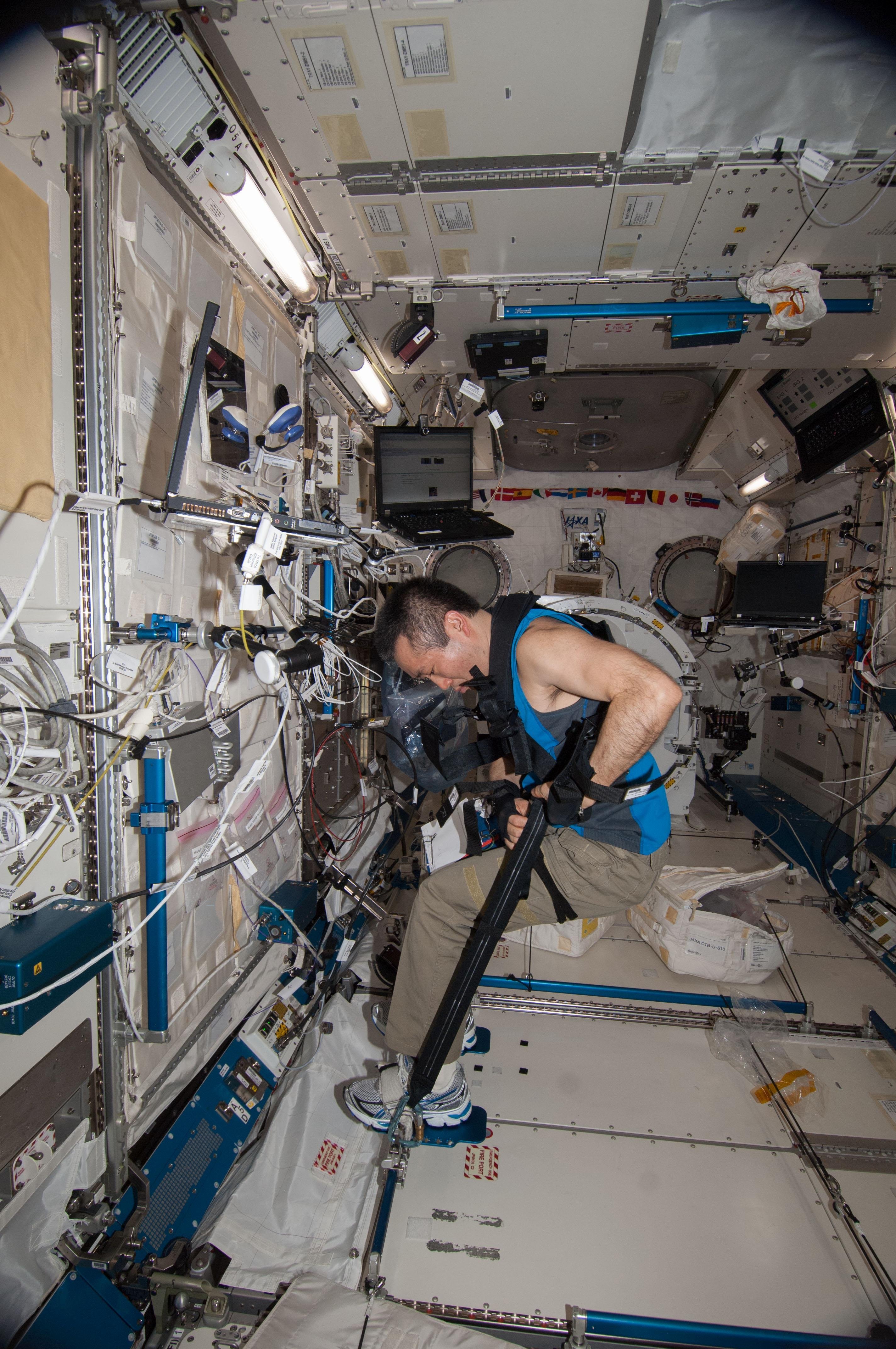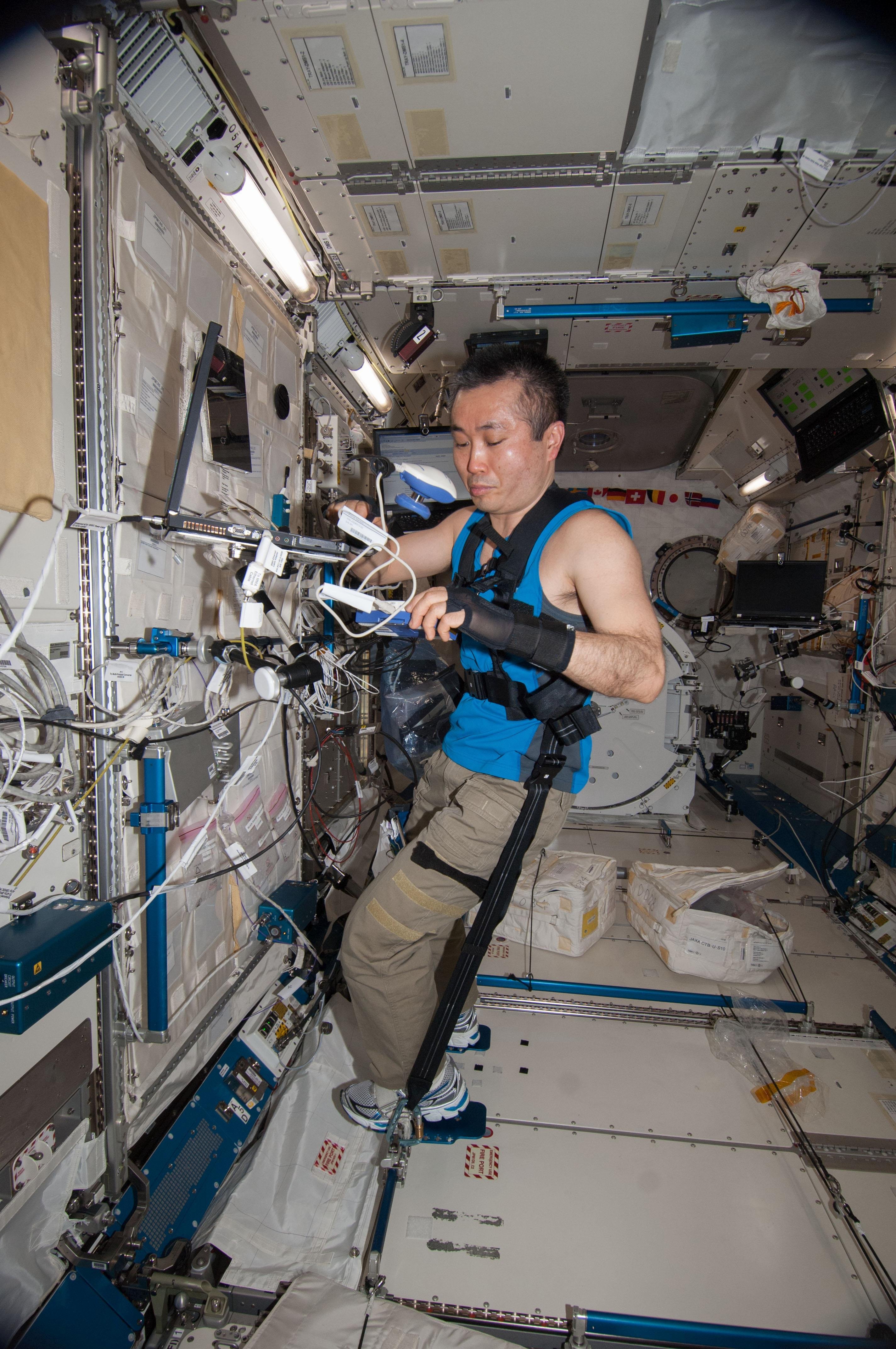- completed
[Hybrid Training]
Effect of the Hybrid Training Method on the disuse atrophy of the musculoskeletal system of the astronauts staying in the International Space Station for a long term
- Human Research
ISS Science for Everyone
SCIENCE OBJECTIVES FOR EVERYONE
A "hybrid training" approach has been developed to counter the atrophy of bone and muscle experience by crewmembers aboard the International Space Station (ISS). This novel approach uses the contraction produced by applying electrical stimulation to the opposite muscle which will in turn resist the voluntary contraction of the active muscle. This Effect of the Hybrid Training Method on the Disuse Atrophy of the Musculoskeletal System of the Astronauts Staying in the International Space Station for a Long Term-initial verification in ISS Hybrid Training System (HTS) can be a useful alternative for the standard exercise training device on the ISS. Additionally, there is potential for being a useful training device in smaller spacecraft for exploration class manned missions beyond Low Earth Orbit.
Experiment Description
RESEARCH OVERVIEW
- It is well known that bone and muscle atrophy is common for astronauts. For instance, atrophy of the muscles and bones in astronauts experiencing micro gravity is evident. This atrophy of the bones and muscles is one of the main problems for long term stays in the International Space Station.
- This time, in order to progress the future plan of this project, the HTS is used for one of an astronaut’s arms for four weeks. His/her muscular strength and bulk are then compared to those of his/her non-HTS arm to examine its operation capability in orbit. This also prevents muscle atrophy.
- The "hybrid training" approach is a solution for bone and muscle atrophy in astronauts. It uses the contraction produced by electrically stimulating the opposite muscle to resist the active muscle. HTS will become a useful back-up for the standard training device in the ISS. It can also be a useful training device in small space ships (CTV) for exploring the Moon and Mars.
DESCRIPTION
The long-term goal of HTS (Hybrid Training System) is to prevent atrophy of the musculoskeletal system in astronauts during a long term stay in the ISS effectively and safely without requiring undue crew time. HTS will become a useful back-up for the standard training device in the ISS, or a useful training device in small space ships (CTV) for the exploration of the Moon and Mars. This time, the HTS are used for one of an astronaut’s upper limbs for four weeks, and his/her muscular strength and bulk are compared to those of his/her non-HTS arm to examine its orbital operation capability, as well as the preventive effect of HTS for musculoskeletal atrophy. The initial flight data with the wealth of ground data obtained so far is brought to the future plan of this project after the first flight.
Media Gallery


Applications
SPACE APPLICATIONS
Muscle atrophy during microgravity has long been recognized as a serious challenge to crew health. While crews exercise regularly each day to counteract its effects, the results are less satisfactory than 1g exercise on Earth. It is hoped that Hybrid Training will stimulate a better response and lead to healthier muscle maintenance while in space.
EARTH APPLICATIONS
Muscle loss is a serious health issue for the elderly and post-operative patients who are blocked from proper exercise for various reasons. Hybrid activities using exercise plus electrostimulation may prove more valuable than electrostimulation alone for patients and other people with reduced exercise opportunities. Hybrid Training has had promising results in trials after leg surgeries and with Antarctic research teams who have reduced exercise opportunities during the winter.
Operations
OPERATIONAL REQUIREMENTS AND PROTOCOLS
One subject is required. If the subject has EVA tasks, HTS sessions should avoid being scheduled for some time before or after EVA.
- Training effect measurement before starting Hybrid Training.
- Battery Preparation.
- Hybrid Trainings for 4 weeks, 3 times a week (total is 12 trainings).
- Battery Preparation between 6th and 7th Training.
- Battery Close Out.
- Training effect measurement after Hybrid Training sessions
Publications
PRINCIPAL INVESTIGATOR(S)
SHIBA Naoto [Kurume University]
Unless specified otherwise, rights to all images belong to ©JAXA



